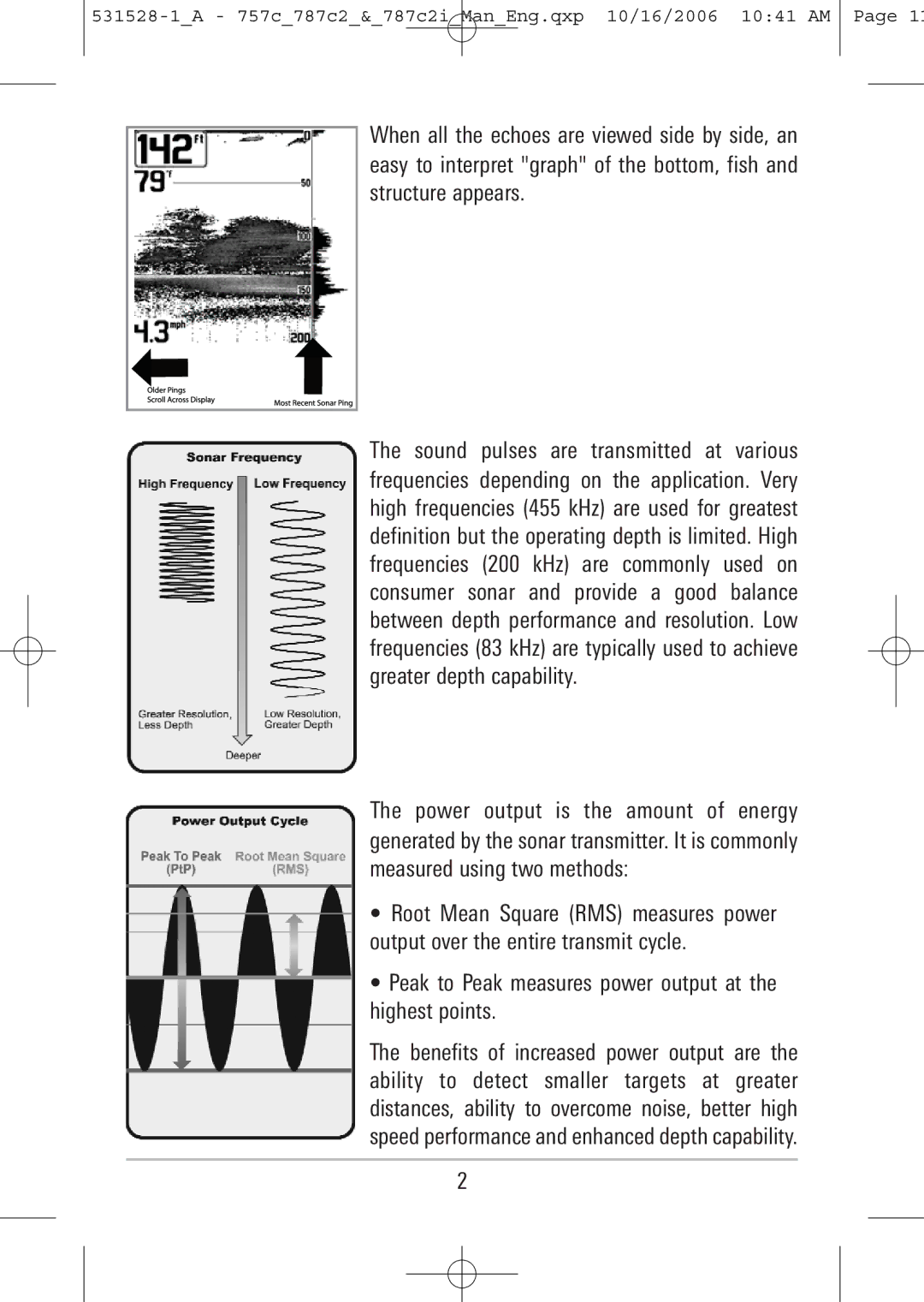757c, 787c2i specifications
The Humminbird 787c2i and 757c are advanced fish finders designed to enhance the fishing experience through their superior technology and features. These models are part of Humminbird's commitment to providing anglers with the tools needed to improve their catch rates and navigate the waters with ease.One of the standout features of the Humminbird 787c2i is its brilliant 7-inch color display. The large, high-resolution screen offers crystal-clear imaging, making it easier to identify fish and underwater structures. Coupled with a user-friendly interface, the display allows anglers to quickly access vital information without distraction.
The 757c, while slightly smaller with a 7-inch screen as well, boasts similar color resolution and quality. Both models utilize Humminbird's cutting-edge sonar technologies, including DualBeam PLUS sonar, which provides versatility in fishing techniques. The DualBeam technology allows the user to switch between narrow and wide beams for precise coverage of underwater areas.
Another notable feature is the exclusive SwitchFire technology. This enables users to customize the way sonar returns are displayed on their screen. Anglers can choose between a traditional view or an enhanced view, allowing for a more detailed look at the underwater environment. The added water column data helps in recognizing fish movement and behavior, invaluable information for any angler.
Both models come equipped with built-in GPS capabilities. The 787c2i includes a mapping feature that allows for precise navigation on water. The included Navionics Gold cartography provides detailed charts and information about various water bodies, helping anglers to find new fishing hotspots effortlessly.
For connectivity, the Humminbird 787c2i and 757c support an array of accessories, including radar and i-Pilot Link, enhancing the user experience with added functionalities like autopilot and advanced navigation features.
Other characteristics include an accurate temperature sensor, adjustable backlighting for optimal visibility in various lighting conditions, and a flexible mounting system. Overall, the Humminbird 787c2i and 757c stand out not just for their features, but also for their reliability and performance on the water, making them a valuable choice for both novice and seasoned anglers. These fish finders embody the spirit of innovation that Humminbird is known for, ensuring that users have the best tools at their disposal for a successful fishing expedition.

